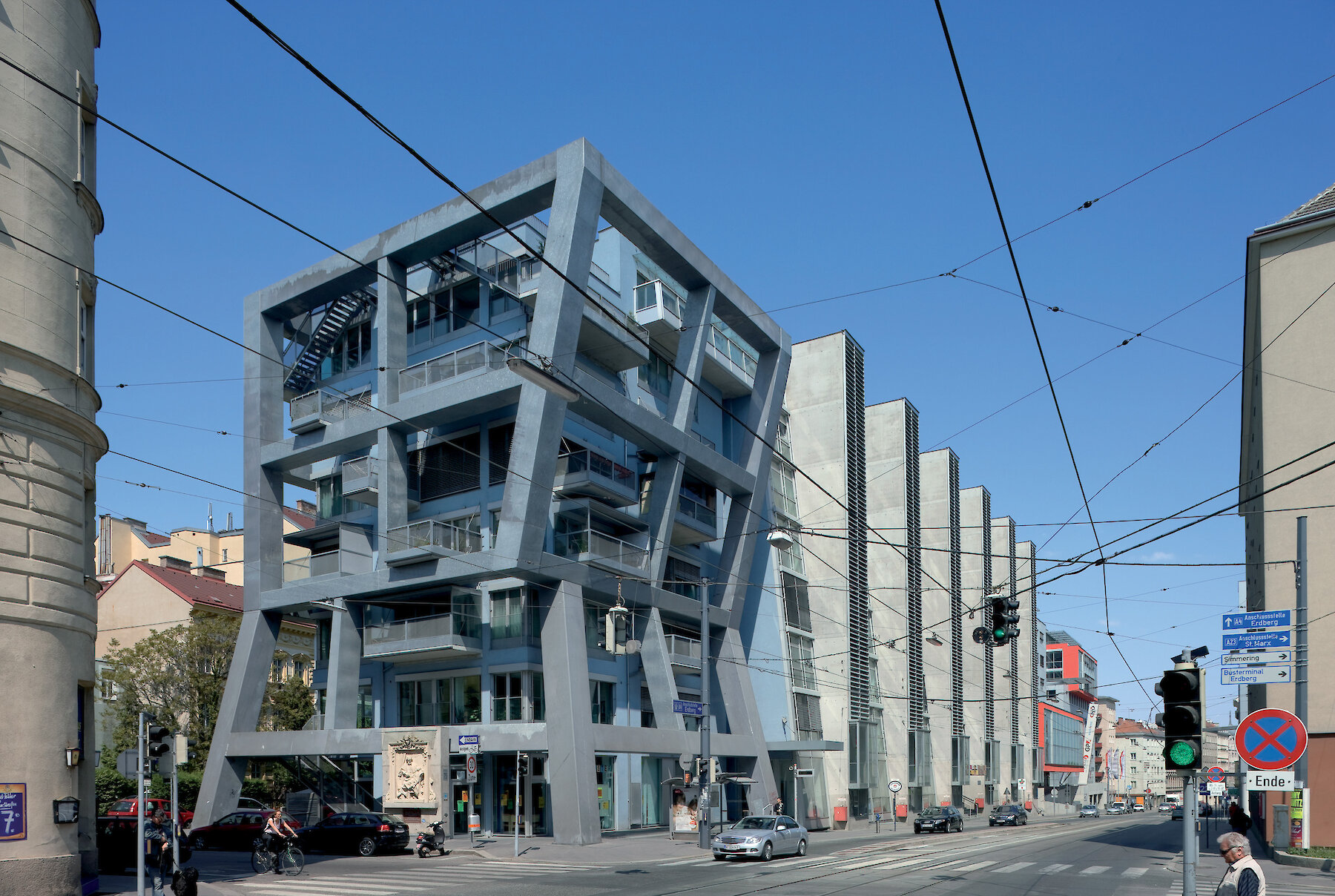Office and Research Center Seibersdorf
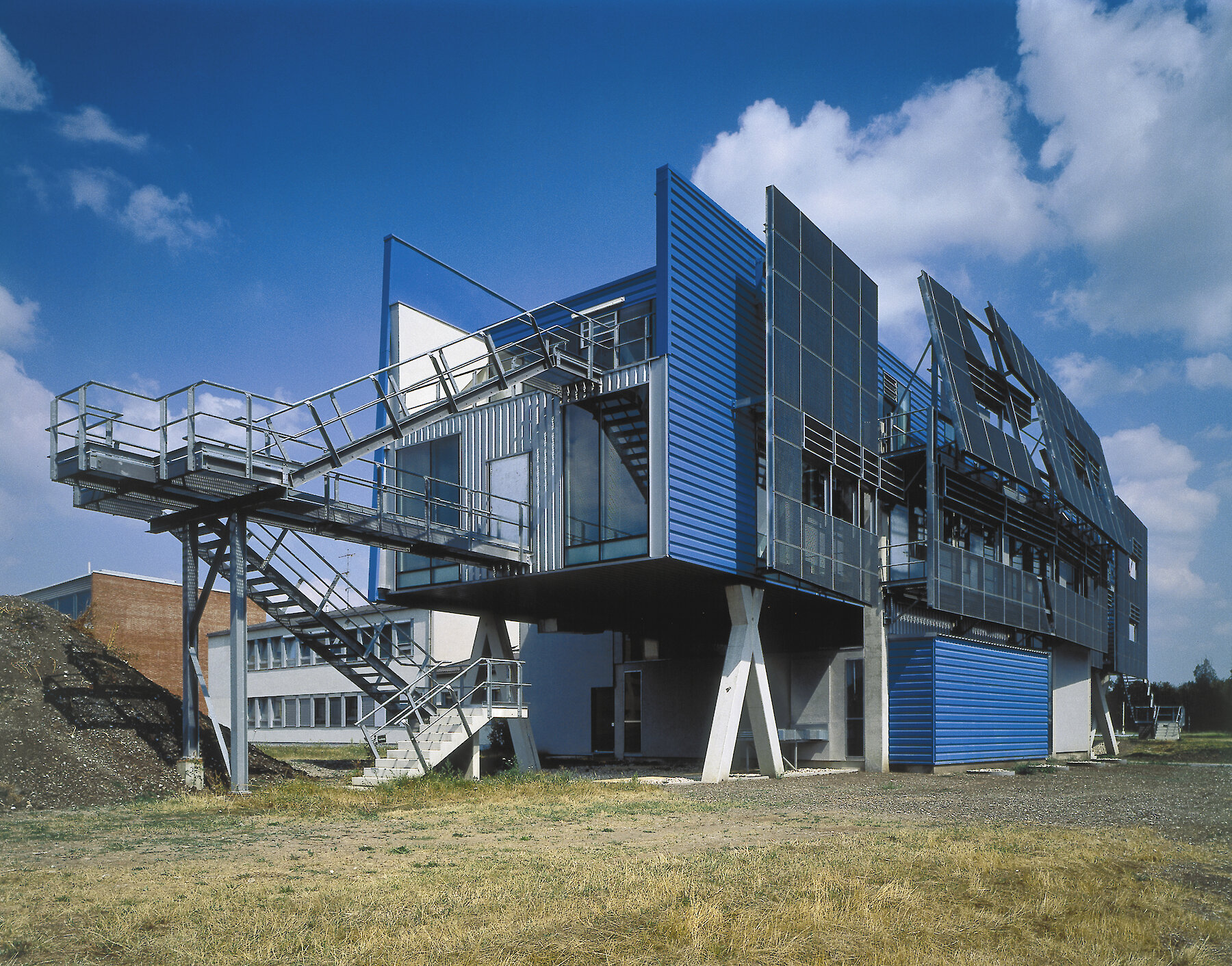
Office and Research Center Seibersdorf
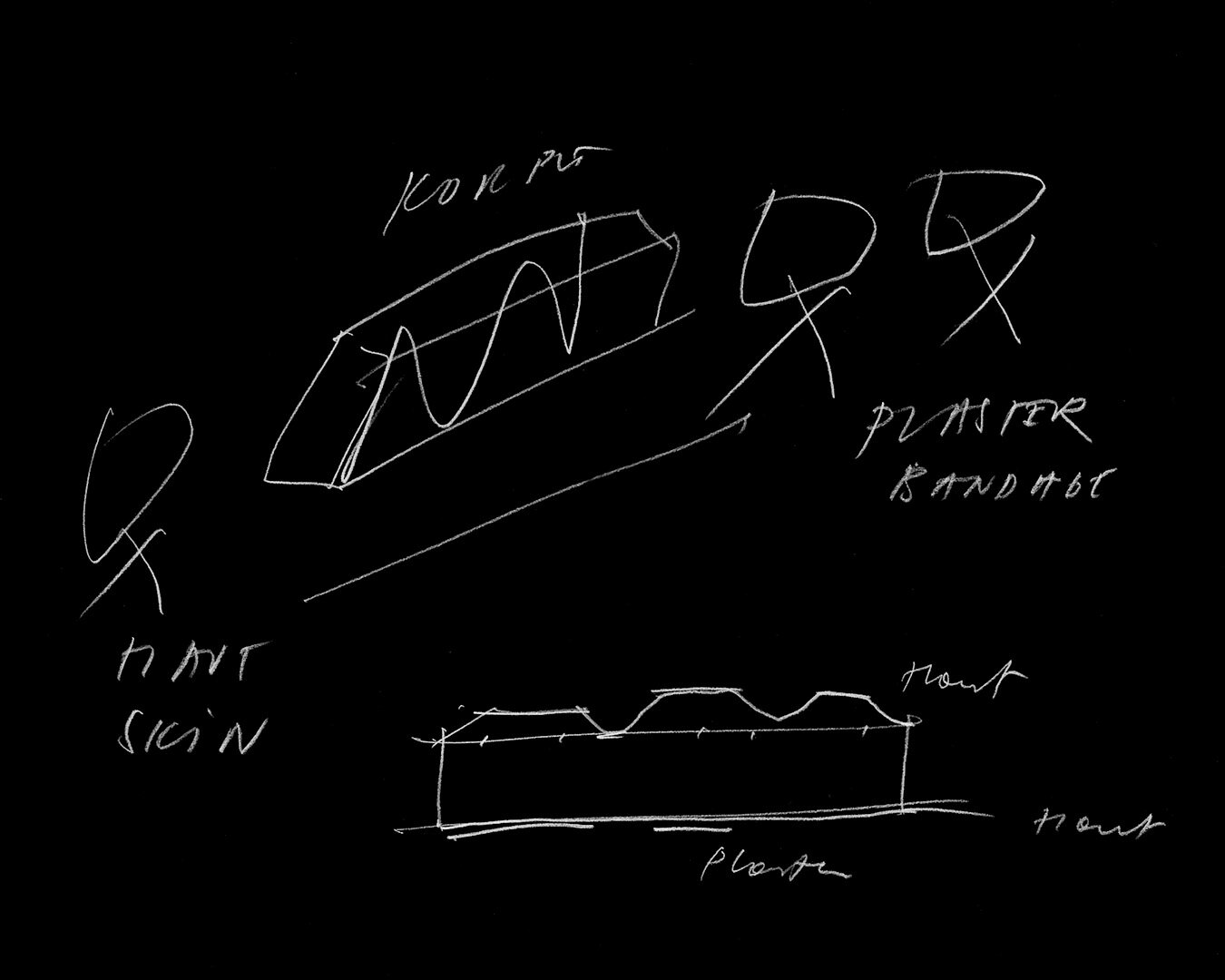
Sketch by Wolf dPrix
Project info
For this project, an existing hall on the Seibersdorf research center site was converted and expanded as an office space. The building was designed for research groups from various fields, such as system analysis, mathematics and environmental technology, who also cooperate across disciplines. The core of the design was to develop a type of building that would reflect this flexible way of working.
A wide variety of building parts and constructional systems were assembled together: “Simultaneous and of equal value, old and new. Simultaneity of systems exists not only in the way the scientists work but also in the architecture,” states architect Wolf dPrix. This can also be read from the various supports, volumes and skins.
The warehouse addition takes on the form of a two-story beam penetrating the pre-existing structure and built over the street. This decision – not to follow the formal idiom of the existing building – resulted in a caesura in the building but also in a kind of gate. The slight rotation of the crossbar in the penetration created visual distortions. This volume on stilts housing the office area can be used flexibly as an open structure or as cellular offices.
The façade is fanned out, creating transitional and interim spaces. The expansion of the space outward in this case can be experienced by users not only visually but also physically: The balcony becomes an interim space, a walk-in view.
The shell of the crossbar that forms the space is constructed in layers: an inside shell, acting as a layer of thermal insulation and noise proofing, and an outer skin with trapezoidal sheet metal. Galvanized grating elements surround the volume. Depending on the size and position of the slats, they can provide either shade or light and are partially adjustable.
The crossbar housing the offices is constructed as a two-story double latticework, with concrete slab ceilings suspended in between. The structure stands on reinforced concrete columns, which are either perpendicular or slanted, depending on their structural function.
The separation of the fire safety compartments vertically on the floors rather than horizontally, combined with the fire escapes, results in an open-looking architecture. The transitions to the edge zones are open and transparent as well, thanks to the covered and screened-in terraces.
- Location
- Seibersdorf, Austria
- Client
- Österreichisches Forschungsinstitut Seibersdorf
- Start of construction
- 1994
- Start of planning
- 1991
- Completion
- 1995
- Gross floor area
- 1 290 m²
- Number of floors
- 3
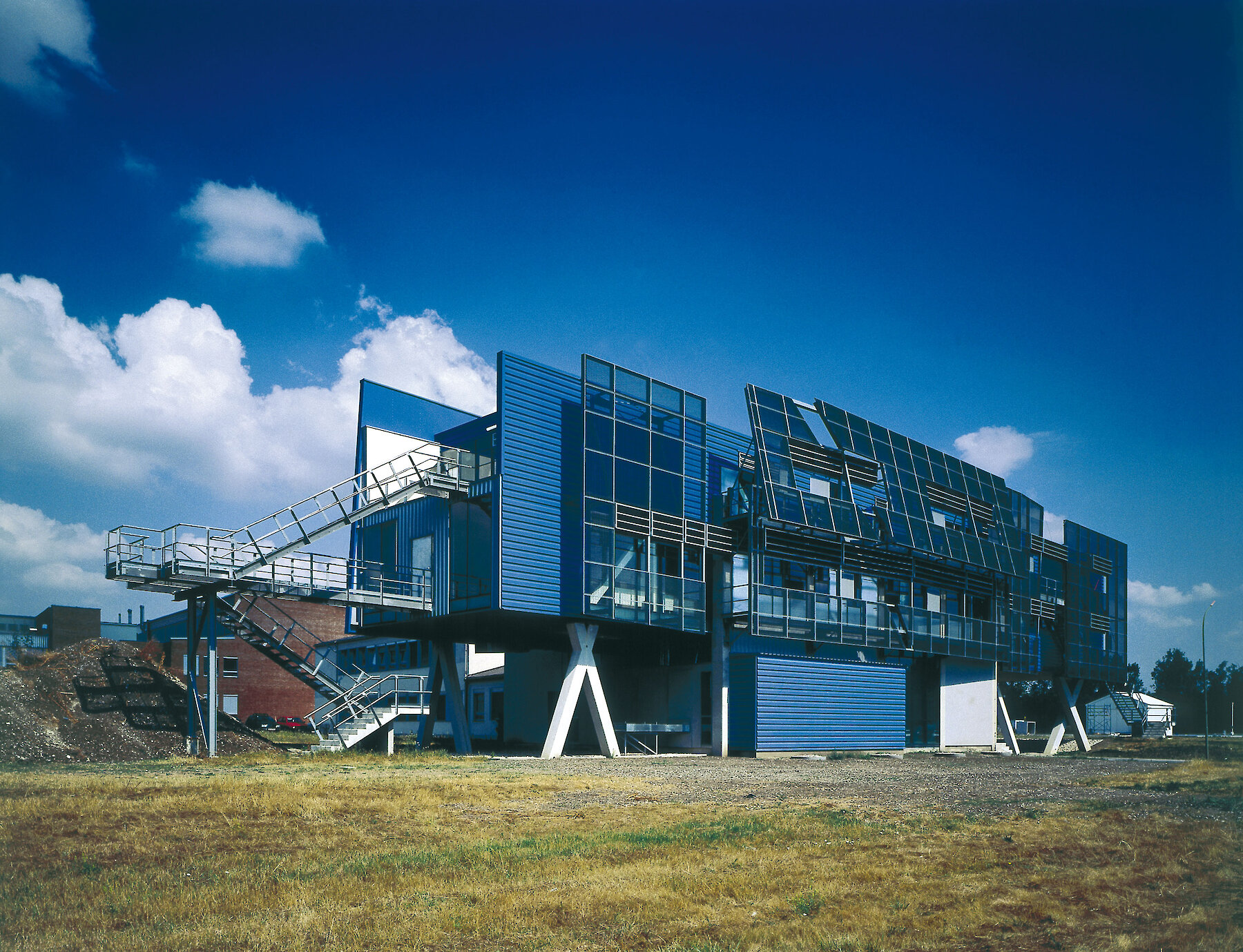
Gerald Zugmann
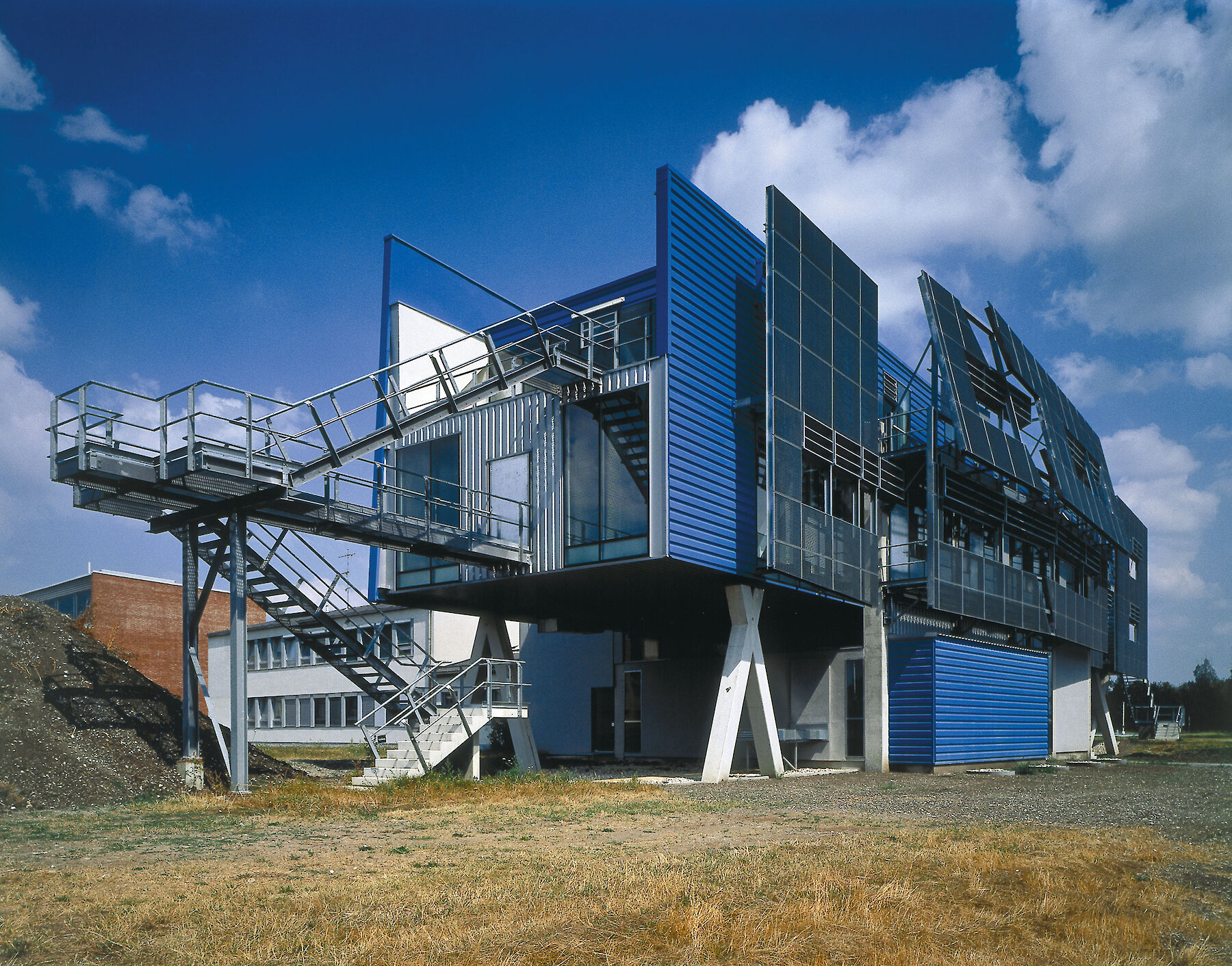
Gerald Zugmann
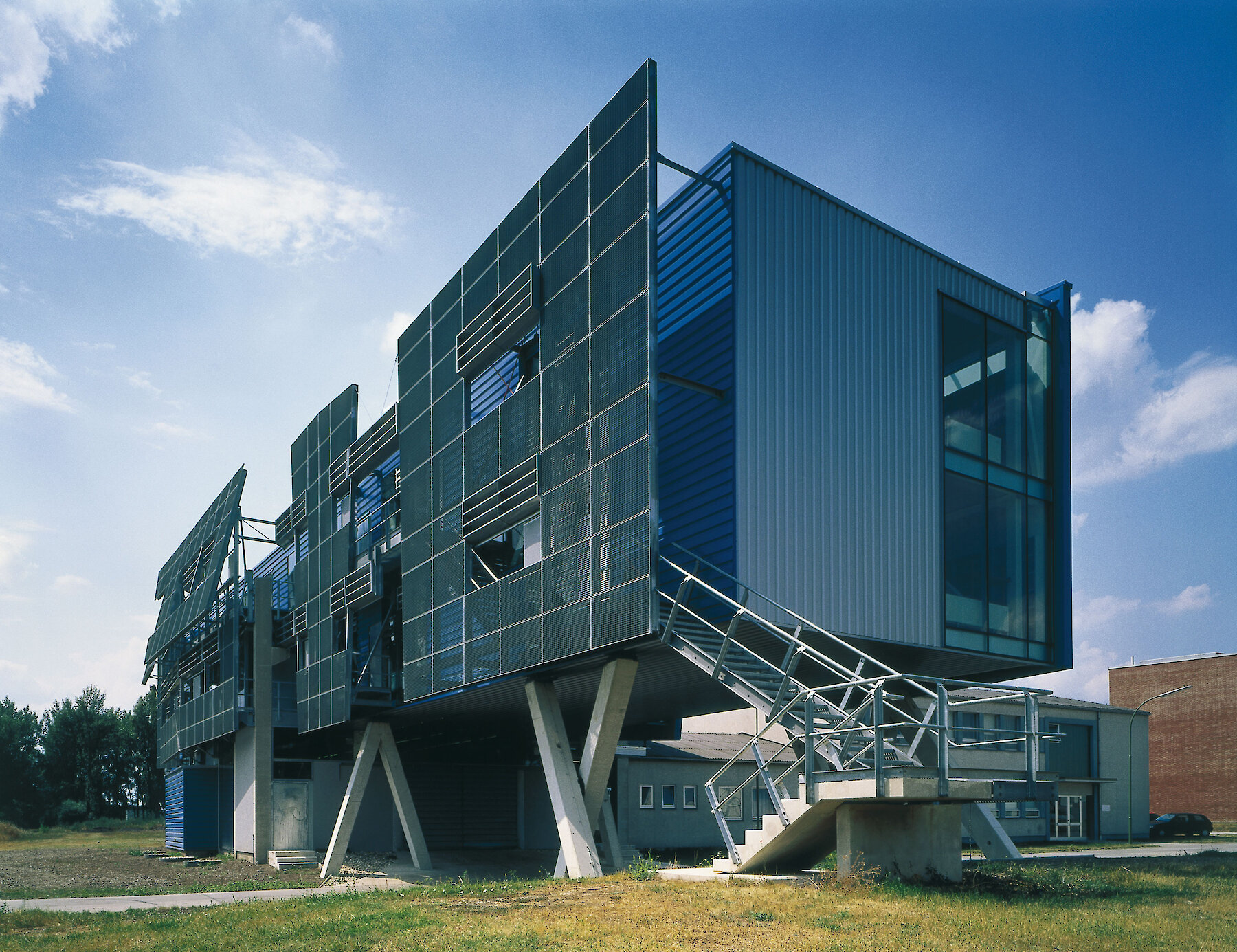
Gerald Zugmann

Gerald Zugmann
On the map
Related projects
Funder Werk 3
Sankt Veit an der Glan, Austria
1987–1989
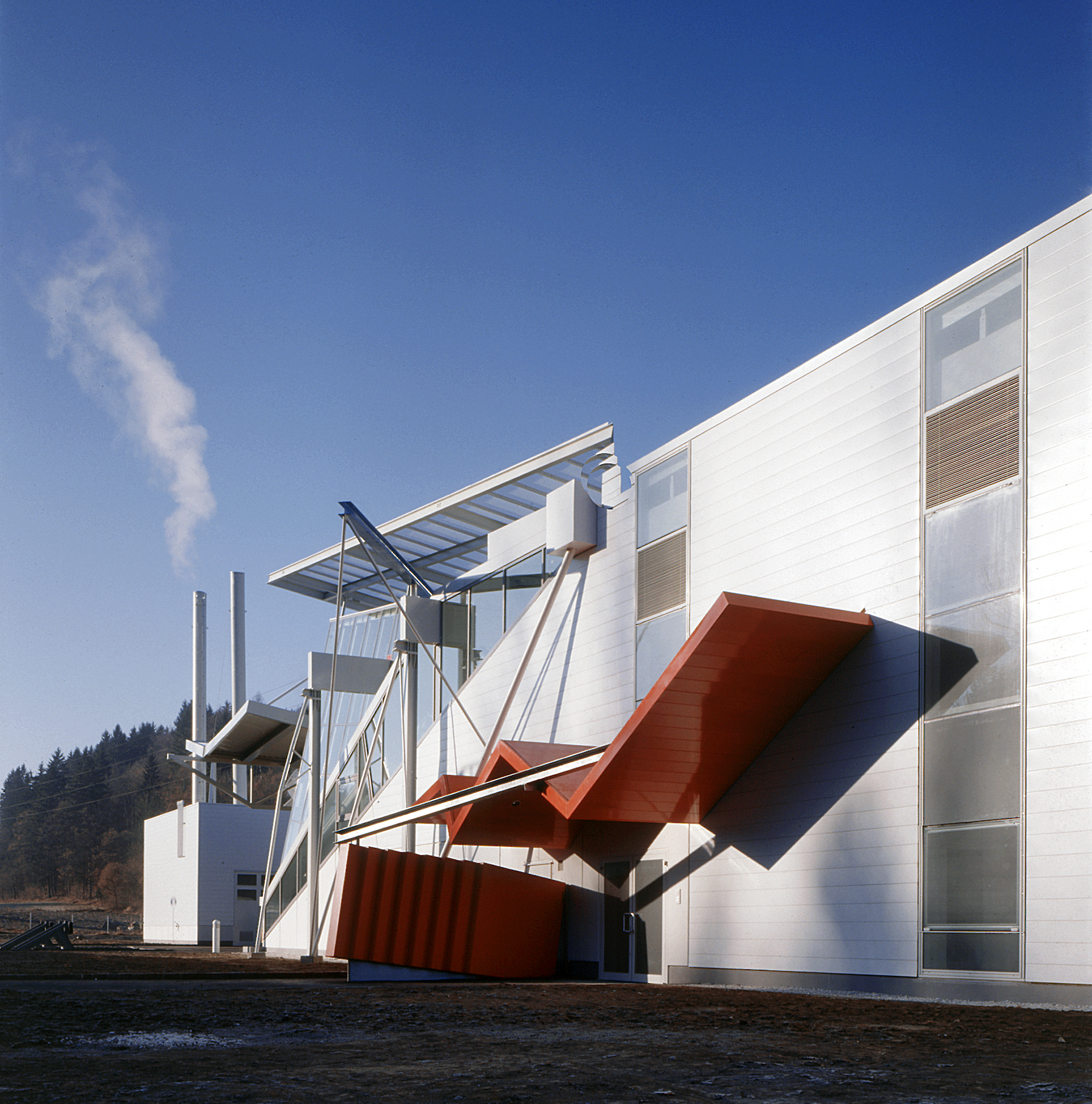

Apartment and Office Building Schlachthausgasse
Vienna, Austria
2000/2003–2005
